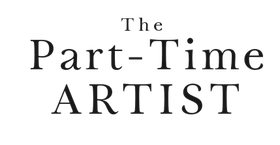Dealing with a full-time job is difficult in itself. It can be time-consuming, stressful, frustrating, or even ungrateful. Dealing with a full-time job while trying to have an artistic career on the side, that’s almost impossible!
And yet, many of us do it, often because we don’t have the choice. Art doesn’t pay the bills, so we have to work for it. Before I quit my job in January, I had worked various full-time jobs for 12 years.
It was difficult to stay motivated and write every day, especially when the day job was giving me a hard time. I was tired ALL THE TIME. And yet I didn’t take many breaks because I spent most of my days off writing.
Living a Lie
The most difficult for me was that I had to hide my true ambitions to my employers and colleagues. I didn’t feel like I could tell them that my goal was to be able to write for a living one day.
A lot of employers want you to be committed and expect you to climb the ladder, and I did at some point, but my heart wasn’t really into it. I knew that if I was given the opportunity to write for a living, I would take it in a heartbeat. I felt like I was living a lie at work, even when I genuinely liked what I was doing. Writing was my passion, but my passion wasn’t paying the bills.
So I had to lie, to pretend I was passionate about what I was doing, to pretend that I was not a writer at heart. And the more you pretend, the more you believe it yourself.
Who Are You?
Writing itself wasn’t easy either. I doubted myself constantly, and my dream of becoming a successful author felt more distant by the day. There was a huge difference between the life that I visualised in my head and the one I had. Every day, as I commuted to work, I felt like the dream was dying a little quicker.
If you work a full-time job, you might feel it too. Work becomes more and more time-consuming. Art becomes less and less important. Are you still an artist if you haven’t done anything creative this month? Should you “settle”?
My brain kept telling me that I would never succeed, that I was deluding myself into believing that I would have my “big break” one day. I think these were the hardest thoughts to combat on a daily basis. It almost paralysed my writing, because I kept thinking that it was all useless. The artist in me was dying.
You Need a Strategy
Now, you have two choices. You can let these thoughts and difficulties destroy the creative within you. Settle and decide that you will do your art as a hobby until you retire. You can resolve to run the rat race, climb whatever corporate ladder is in front of you and embody the perfect employee, forgetting your dreams of artistic success.
Or you can fight back.
And if you want to fight back, you need a strategy. A strategy that allows you to keep creating despite the doubts, that doesn’t depend on how you feel, and that keeps the dream alive.
The strategy I’m going to talk about today consists in five main elements:
1. Organise Your Time
You are going to need a martial organisation for your time. Full-time jobs take anywhere between 35 and 80 hours a week. If you add your commute, plus the chores, plus the sleep hours, plus your other responsibilities, it doesn’t leave you with much time to play with.
The best way I have found to deal with this efficiently is to draw a weekly planner. I’m a visual person, and being able to see on a piece of paper the days of the week, with clear divisions between work time and writing time was a good way to organise my week. It was particularly helpful when I used to work shifts that changed every day. Other people prefer a more traditional calendar, and there are many apps that can help you with this.
I also used to be a pro at organising activities in order to waste the least time possible. I was reading a lot during my commute, for example. Mainly non-fiction books to plan my business, but badass fictions too. I listened to podcast or watched shows while exercising. I worked on my website during my breaks. There are a lot of “pockets” of time that you can use to do more, don’t ignore them!
And on that note, beware the activities that steal your time and don’t bring you any value. While it is very important to relax and rest, I’m talking about these things that can take a longer time, but are so addictive that you don’t necessarily realise it. Binge-watching shows, mobile phone games, social media scrolling, there are a lot of these little things that eat your free time. While you certainly don’t need to stop all of them, try to reduce the time they steal from you.
2. Save Your Energy
I used to be tired all the time when I was working on my day job, to the point where I was very close to burnout several times. The problem with being an artist with a full-time job is that you have twice the work, twice the worries, twice the demotivation and twice the frustrations. It gets exhausting!
Sleeping well, eating healthily and exercising should be part of your priorities. Even if that means that you have to change your organisation. In the long run, it is more beneficial to take care of yourself than pushing until you collapse.
Allow yourself to take breaks from time to time. Holidays, days off watching TV or having a lie-in from time to time, these are a few examples of what you can do when you feel run-down.
Despite what you boss might say, it is also important to learn how to save your energy at work. I am NOT talking about slacking off, being lazy or giving your work to other people, though. I am just saying that you should observe your own behaviour. Are you the kind of person who needs to give 110% to every task? I am too! I would take everything to heart, and I would take home many of the frustrations from my day job. It’s important to learn to let go, to be less stressed about what I was doing at work and to believe that what I was doing was enough.
3. Find the Right Job
Make sure you have a job that works with your art (and not the other way around). I know that many people don’t have a choice when it comes to what full-time job they are doing, mainly for financial reasons. But if there’s some wiggle room there, let’s assess your activity:
- Does it give you enough time to create? And at the right time of the day/week?
- With the type of art that you do, do you need flexibility or routine?
- Do you feel challenged or overlooked?
- Do you feel like you can say you are an artist or do you have to hide it?
- Is it stressful or boring?
- Do you get along with your colleagues and your boss?
- Do you intend on having a career there, or is it just a temporary job until you make it as an artist?
These are some of the many questions you can ask yourself to see if this job works for you. Your answers will be very personal, and your assessment will depend on what you want for your life, on your goals as an artist and on your tolerance for non-ideal situations.
I recently did this work for my last full-time job, and I found that it was not working anymore for me. It was making me miserable, I didn’t get along with my bosses and it was taking a lot of my joy away. I was very lucky that I was in the position to quit. This might take longer for you, but trust me, a bad day job is the worst that can happen with your art. It is totally worth exploring other options if you can! And if you need some help to find a new job, have a look at my CV post from last week.

4. Create Goals
It might be tempting, as you are very busy and potentially stressed with your full-time job, to “go with the flow” with your art. See how it goes, not have any goals and just do whatever you feel like. I did this for several years, but I ended up finding out that it was not what I really wanted. I realised that I wanted to become a professional writer, and therefore I had to stop treating writing like a hobby.
You need to define your goals in order to determine what to prioritise in your life. Is your goal to become a full-time artist? Or do you want to have a full-time job until you retire? What do you want to achieve? Do you have big projects and when do you want to finish them?
There is no good or bad answer here, because your goals are very personal. However, I think it is a good thing to know where you are going, so that you can adapt your everyday work accordingly.
5. Be Consistent
In my experience, it is better to create for half an hour every day than do it for three hours once a week. In other words, consistent and regular short sessions are much better than a long session from time to time.
There are several reasons for that. The first one is that if you create every day, you will develop a habit for your art, and soon your day won’t feel complete without a creative session. It will help with your productivity and your motivation.
Another reason is that it makes it easier to enter the “zone”. You know, that mindset that you need to be in to make your art? When I write, it’s like my brainwaves change, it’s like I’m in a different thought pattern, and accessing this mindset can be difficult. The more often you do it, the easier it gets.
Finally, creating every day can help you stay sane and deal with your full-time job better. When I had issues in my previous day job, I used to think “well at least I wrote today, so I haven’t totally wasted my day”. It wasn’t much, but some days it helped me avoid a big breakdown.
Balancing Your Art With a Full-Time Job
There were many days when I thought I would give up writing. I didn’t think I would be able to cope anymore. I had lost all my motivation and my day job was sucking all my joy. And yet, these strategies allowed me to keep going. They helped me when I was at my lowest, and they helped fellow artists who were going through the same problems.
I am passionate about helping artists achieve a balance between their creativity and their day job. I know that many of us don’t have a choice. It is heartbroken to me to see creative people wilt because they are sucked dry by their job.
If this is your case too, know that you are not alone, and that you can do something about it! Try these strategies, apply them to your everyday life and see how they change your productivity and your outlook on your life. Tweak them, test them, find your own variations.
Going Further
There are many more details and strategies in my book, The Part-Time Artist. I wrote this book because I wanted to give hope to people like you! The artists who are doubting themselves right now. There are so many reasons to stop creating, and I’m sure that there are many voices around you that push you to quit. I want to be the opposite voice, the one that tells you that you can do it, that you can have it all. It won’t be easy but you have that power in you.
Want to know more? Buy the book now:
Want to get personalised help? Don’t hesitate to reach out to me via the contact form or the comments below.
Céline is an author passionate about helping fellow artists reach their potential and live a happy, balanced life.




